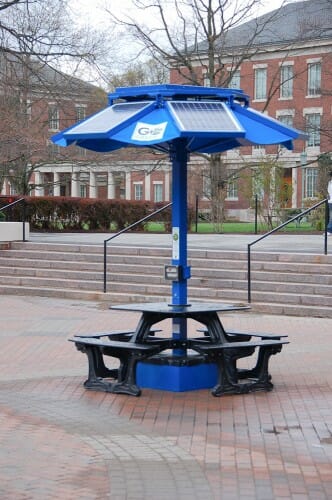When Environmentally Sustainable Actually Was Sustainable
Many of your know that my company operates public parks. So I see a lot of different approaches to park design and construction. Of late I have been observing a trend in "environmental sustainability" in park design that is actually the opposite.
The US Forest Service has built more campgrounds, by far, than any other entity in the world. For decades, particularly in the western United States, the USFS had a very clear idea about what they wanted in a campground -- they wanted it to be well-integrated with nature, simple, and lightly developed. They eschewed amenities like pools and playgrounds and shuffleboard. They avoided building structures except bathroom and shower buildings. The camp sites were simple, often unpaved with a table and fire ring and a place for a tent. They used nature itself to make these sites beautiful, keeping the environment natural and creating buffers of trees and natural vegetation between sites. I have never seen an irrigation system in a western USFS campground -- if it doesn't grow naturally there, it doesn't grow.
This has proven to be an eminently sustainable design. With the exception of their underground water systems, which tend to suck, they are easy to maintain. There is not much to go wrong. The sites need new gravel every once in a while. Every 5-10 years the tables and fire rings needs replacement, hardly a daunting task. And every 20-30 years the bathrooms needs refurbishment or replacement. The design brilliance was in the placement of the sites and their integration with the natural environment.
Over the last several months, I have been presented with plans from three different public parks agencies for parks they want to redevelop. Each of these have been $10+ million capital projects and each one had a major goal of being "sustainable." I have run away from all three. Why -- because each and every one will be incredibly expensive and resource intensive to operate and of questionable popularity with the public. Sustainability today seems to mean "over-developed with a lot of maintenance-intensive facilities".
What each of these projects has had in common are a myriad of aggressively architected buildings - not just bathrooms but community rooms and offices and interpretive centers. These buildings have been beautiful and complex, made from expensive materials like stainless steel and fine stone. They have also had a lot of fiddly bits, like rainwater collection and recycling systems and solar and windmills. They have automatic plumbing valves that never seem to work right. The grounds have all been heavily landscaped, with large lawns that require water and mowing, with non-native plants that need all kinds of care. Rather than a traditional sand pad for tents they have elaborate wooden platforms.
The plans for these facilities are beautiful. They win awards. In fact, I am increasingly convinced that that is their whole point, to increase prestige of the designer and the agency that hired them through awards. But they make no sense as a recreation facility. In 10 years, they will look like hell. Or sooner, since one agency that is in the process of spending a $22 million bond issue on 5 campgrounds seems to not have one dollar budgeted for operation and maintenance.
These things actually win awards for sustainability, which generally means they save money on one input at the expense of increasing many others. One design got attention for having grass on the roofs, which perhaps saved a few cents of electricity at the cost of having to irrigate and mow the roof (not to mention the extra roof bracing to carry the load). I briefly operated a campground that had a rainwater recovery system on the bathrooms, which required about 5 hours of labor each week to keep clean and running to save about a dollar of water costs.



